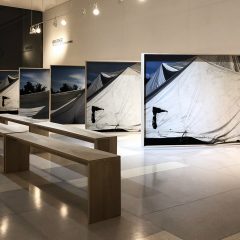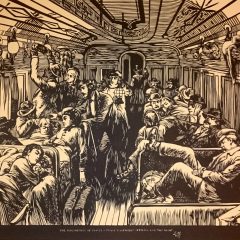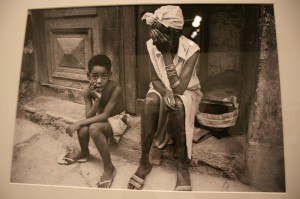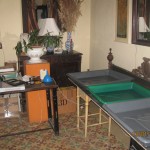Last June I attended the Hybrid Book Conference at University of the Arts where I was a respondent (along with Anabelle Rodriguez). The conference was a mix of sessions about teaching book arts today and musings about cyberbooks and the future of the mostly real world paper practice. It was a great conference — and had a nice book fair at which many of the conference’s participants had tables.
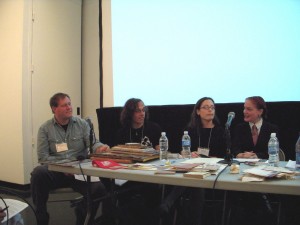
One of the best sessions I attended was on collaborative processes, and one of the most interesting presentions was by Steven Daiber whose most recent book project, El Muro, captured my attention both for the story of its making and for its content — photographs of Havana’s gay and transgender community taken by Cuban artist, Eduardo Hernández Santos.
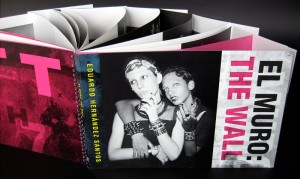
Daiber, who runs Red Trillium Press in Florence, MA, said he’d been going to Cuba since 2001 and was there for ten months on one trip. He talked about Cuba’s socialistic system fostering a culture of collaboration and sharing. He also talked about the poverty he encountered and the lack of resources available to artists on an island that’s trade embargoed by most of the world. It was a sad realization when he figured out the money in his pocket was the equivalent of the artist’s salary for six months.
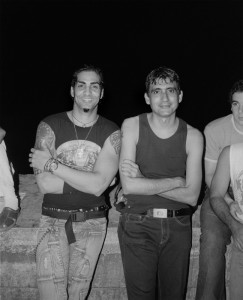
Daiber speaks no Spanish but got along on a “leap of faith and trust,” he said. “El Muro” took two years to produce–it was self-produced by Daiber out of friendship and commitment to the artist, he said. Well, I was hooked on the idea of a New Englander going to Cuba and being inspired to produce this book so I followed up with some questions. Here’s part 1 of the Q&A.
On your “about page” at Red Trillium’s website it says your parents are biologists. Did this steer your early work, which is focused on nature?
I was born in 1955 and grew up in Newark, DE spending my summers in Lewes, DE, where my parents worked as marine biologists at the University of Delaware Marine Lab. (See the book, Salty Memoirs: Adventures in Marine Science) Summers in the early 1960’s were spent taking a boat across the canal to the Marine Lab where we lived and explored. My brother Greg and I were on the research boats collecting water samples, fish and learning to dissect sharks by the age of 8. In 1967-68 the US Army left Cape Henelopen at the mouth of the Delaware Bay ceding the land to the state. The Marine Lab expanded into Henelopen including summer housing for faculty. Greg and I had a huge park to explore- all ours to fish, collect critters, hike and swim. During the school year I spent weekends camping- I was an obsessed Boy Scout.
Any early art influences?
Every year my brother and I receive a packet of drawings from our paternal Grandfather, working sketches for 400 rural scenes bound into notebooks he created during retirement. I had a very early training in color theory, and design. In our home were/ are braided rugs from my maternal grandparents; hand dyed from US Army woolen off cuts made in the New England mills to whom my grandfather sold insurance. My mother knitted over 100 sweaters in her lifetime and for a few brief horrible years in the 1970’s made our clothes in polyester double knit fabric. Well made – but ugly fabric. My father’s passion for photography supplied a retreat to the basement darkroom and later led to a catalog of sidles documenting more than 400 species of wild flowers he found in the mid Atlantic region.
What were your favorite specimens to draw–aquatic? live things? dead things?
In 5th grade I loved showing girls dissected fish eyeballs. There is poetry in life, decay and change. Dead things don’t move around, you don’t have to imagine what they look like swimming or walking. The dead and desiccated just lie there on the table allowing for grand thoughts on the mystery of life.
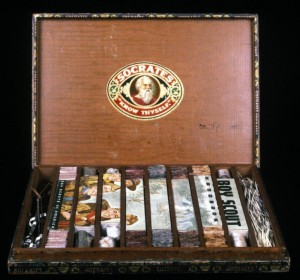
You are a book artist. Did you get your love of books from being around books as a child?
Of course, reading was an escape, an adventure and way to pass the time. We did not have a TV during summer and only limited TV viewing during the school year. I spent hours with a flashlight under the covers of my bed reading.
Did you study book art making?
I used to be a very happy landscape painter. I came to book arts through a series of drawings I completed on an 1829 copy of Ferguson’s Astronomy. Starting in 1989, I took the book apart, working on the drawings over two years. That led to working on and in other books from the 19th and early 20th century. I then decided to study book arts and moving to Northampton, MA from Brooklyn made it very easy to study with Daniel Kelm.
Specimens. Do you have a massive collection of natural specimens?
Hmmm… massive, no there are folks out there with more, but I do have a few including a partially dissected cougar head from the 1920’s and a human skull with Made in India label glued inside the cranium. Like the beagle that owned us a few years ago, I am always dragging in loads of dried flowers, leaves, bark and the odd bone. She, the beagle, was always good for a deerskin or a ripe leg.
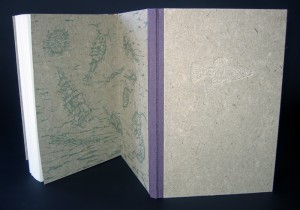
Also, you seem to use a lot of found books and maps in your own artist books, almost like they are specimens you’ve discovered and are putting to new use. Do you search out man-made specimens like you do natural specimens?
I have an inventory of used, broken and unwanted books and odd bits. I am always looking though them. I’ve cut back some after my parents died and I had to deal with 1000’s of book and all their stuff. I am fascinated with books published in the 19th century, for their illustrations of wood engravings and curiosity of exploration. That was an era where the bounty of the earth was ripe for the picking and look where that has gotten us.
And if so where do you search?
Everywhere- bookstores, trash bins, library sales, antique shops, Goodwill and the loading dock at my studio building. It is amazing what even artists throw away. I’m always looking.
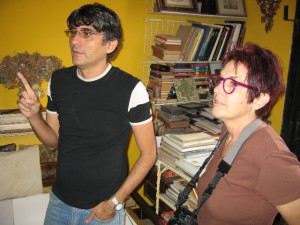
What drew you to Cuba?
Jacqueline Hayden, my wife, is a Professor of Film and Photography at Hampshire College. One day in 2001 she asked if I wanted to go to Cuba? Hampshire College had started an exchange program for students to study in Havana and for Cuban scholars to have the opportunity to travel and study here. She, and some of the other faculty were establishing the program in Havana. Sure, I said. What did I know about Cuba – Fidel, the Revolution, Bay of Pigs, the Missile crises and cigars? Where and what was the Bay of Pigs? I had a thousand questions. The first trip was for two weeks, the second for three weeks, and then for ten months, we are in love with the island- our friends there and their art. (continued in part 2)


